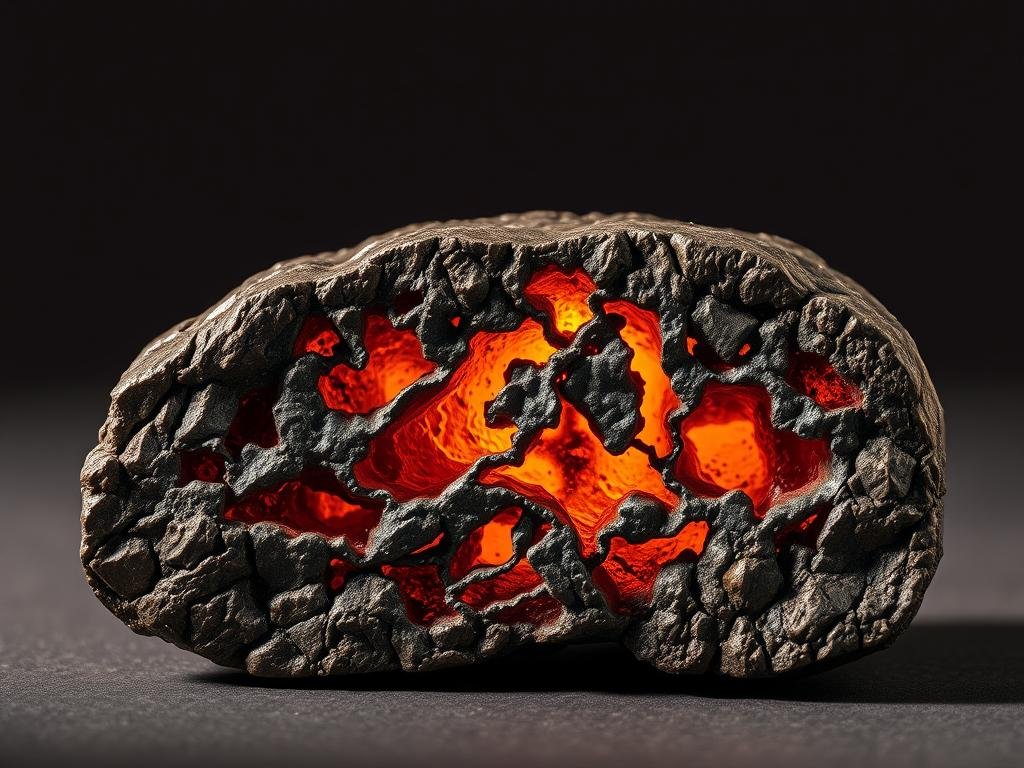Iron, a fundamental element in the Earth’s crust, is a crucial material in various industries due to its unique 屬性. One of its key characteristics is 密度, 這對其應用和性能產生了重大影響。
The density of iron is approximately 7.87 grams per cubic centimeter (g/cm³), a fundamental physical property that affects its widespread use. Understanding iron’s density is vital for material selection in engineering applications, comparing it to other common materials, and recognizing its value in structural applications.
Iron’s density impacts its strength characteristics and versatility in various applications, from architectural elements to protective armor. This introduction sets the stage for a comprehensive examination of iron density, establishing the scientific and practical context for readers.
Understanding the Density of Iron
Density, a measure of mass per unit volume, is a critical characteristic of iron that affects its performance in various contexts. It is defined as the mass of a substance per unit volume, typically measured in grams per cubic centimeter (g/cm³) or kilograms per cubic meter (kg/m³).
What Is Density and Why It Matters
理解密度對工程應用至關重要,因為它直接關係到零件和結構的重量,影響設計考量和材料選擇過程。鐵的質量與體積之間的關係在強度與重量之間建立了一個平衡,使其成為許多需要耐久性的結構應用的理想材料。
- Density is a fundamental physical property that influences the behavior of iron in different environments.
- The density of a substance determines its weight and affects its suitability for various applications.
The Standard Density of Iron: 7.87 g/cm³
The standard density of iron at room temperature is approximately 7.87 g/cm³, making it significantly denser than water (1 g/cm³) but less dense than metals like lead (11.34 g/cm³). To put this into perspective, consider that iron is nearly eight times denser than water.
| Material | 密度 (g/cm³) |
|---|---|
| 水 | 1 |
| 鐵 | 7.87 |
| Lead | 11.34 |
對鐵的密度有精確的了解對於製造規格和品質控制至關重要。通過了解鐵的密度,工程師和製造商可以就其在各種應用中的使用做出明智的決策。
鐵的密度背後的科學
At the heart of iron’s density is its unique atomic configuration. The density of a material is not just a simple physical property; it is deeply rooted in its atomic structure and how the atoms are arranged.
原子結構與晶體形成
Iron atoms form a crystal structure where each atom is surrounded by other atoms in a repeating pattern that occupies the minimum empty space. This arrangement is crucial in determining the density of iron. At room temperature, iron has a body-centered cubic (BCC) crystal structure, which contributes to its characteristic density of 7.87 g/cm³.
The crystal structure of iron changes at different temperatures. For instance, at higher temperatures, iron transitions from a BCC to a face-centered cubic (FCC) structure, known as austenite. Interestingly, austenite iron, which is in the FCC form, has a different density compared to ferritic iron, which is in the BCC structure.
How Density Relates to Other Physical Properties
The density of iron is closely related to its other physical properties, including thermal conductivity, electrical conductivity, and magnetic properties. For example, the atomic weight of iron (55.845 u) and its atomic number (26) play significant roles in determining its density relative to other elements on the periodic table.
了解鐵的密度背後的科學,能提供寶貴的見解,說明這種金屬在不同條件下的行為。這些知識在合金形成中操控鐵的性質時至關重要,加入其他元素可以顯著改變其密度和其他物理特性。
| Property | 鐵的價值 | 與密度的相關性 |
|---|---|---|
| Atomic Weight | 55.845 u | 直接影響密度 |
| 常溫晶體結構 | BCC | Influences density |
| 密度 | 7.87 g/cm³ | – |
| 熱傳導係數 | 高 | Related to atomic structure |
比較鐵的密度與其他金屬
了解鐵的密度與其他金屬的關係,對於各種工業應用來說至關重要。金屬的密度是一個基本特性,影響其適用於不同用途的程度,從建築和製造到國防和工程的專業應用。
鐵對比鋁、銅和鉛
鐵的密度為7.87 g/cm³,明顯高於鋁(約2.70 g/cm³)和鈦(約4.51 g/cm³),使得鐵及其合金在需要高強度和耐久性的應用中更為優選。然而,鐵的密度低於銅(約8.96 g/cm³)和鉛(約11.34 g/cm³),它們各自根據其獨特的特性具有不同的應用。
When comparing iron to these metals, the differences in density significantly impact material selection. For instance, aluminum’s lower density makes it ideal for aerospace applications where weight reduction is critical, while copper’s high density and excellent electrical conductivity make it suitable for electrical wiring and circuits.
| 金屬 | 密度 (g/cm³) |
|---|---|
| 鋁 | 2.70 |
| 鈦 | 4.51 |
| 鐵 | 7.87 |
| 銅 | 8.96 |
| Lead | 11.34 |
鐵對比鋼及其他鐵合金
When iron is alloyed with carbon and other elements to form steel, the resulting density can vary slightly, typically ranging from 7.75 to 8.05 g/cm³, depending on the composition. This variation in density, although not drastic, can influence the selection of steel for specific applications, particularly in the automotive and construction industries.
The addition of alloying elements can also affect the physical properties of steel, making it more suitable for certain applications. For example, stainless steel, which contains chromium, is valued for its corrosion resistance, while high-carbon steel is used in applications requiring high strength and hardness.
影響鐵密度的因素
鐵的密度受到多種因素的影響,包括其純度、所暴露的溫度,以及所採用的加工方法。了解這些因素對於準確預測鐵在各種應用中的行為至關重要。
Purity and Composition
鐵的純度對其密度有顯著影響。純鐵,含有 99.9% 或以上的鐵,維持約 7.87 克/立方公分的標準密度。然而,雜質或合金元素的存在可能會改變這個密度。例如,向鐵中加入碳以製造鋼,通常會降低其密度,與純鐵相比。其他元素,如鎢或鉬,則可以增加鐵合金的密度。
- 純鐵的密度約為7.87 g/cm³。
- 合金元素如碳可以降低鐵的密度。
- Elements such as tungsten or molybdenum can increase the density of iron alloys.
溫度影響
Temperature is another critical factor that affects the density of iron. As iron heats up, it expands, leading to a decrease in density. This thermal expansion is a quantifiable change that occurs across different temperature ranges. Understanding the thermal conductivity and expansion properties of iron is essential for applications where temperature variations are significant.

表格與處理方法
處理鐵的方法,不論是鑄造、鍛造或燒結,也會影響其密度。不同的加工技術可能導致鐵的微觀結構產生變化,影響其整體密度。例如,燒結有時會導致較不密實的產品,因為可能存在孔隙。
通過了解這些因素,工程師和製造商可以更好地預測鐵在他們設計和應用中的性能,確保更準確的規格和材料性能預測。
不同形式的鐵及其密度
不同形式的鐵展現出不同的密度值,受到其成分和加工方法的影響。鐵的密度是一個關鍵的性質,在其不同形式中,包括純鐵、鑄鐵和鍛鐵,密度有顯著的差異。
純鐵
純鐵作為基準參考,其密度為7.87 g/cm³。然而,商用純鐵通常含有少量雜質,可能會略微改變此數值。純鐵的高密度是由於其晶體結構以及缺乏顯著的雜質或空隙所致。
鑄鐵
鑄鐵含有2-4%碳和矽,與純鐵相比具有較低的密度,通常範圍為6.8至7.8 g/cm³。鑄鐵中的石墨夾雜物形成微觀空隙,降低了其整體密度。不同類型的鑄鐵,如灰鐵、白鐵、球墨鐵和可鍛鐵,根據其特定的碳結構和加工方法,具有不同的密度。
“鑄鐵的密度可能因石墨形態的差異以及其他元素的存在而有顯著變化。”
鐵藝
鍛鐵的特徵是具有纖維狀的爐渣夾雜物,通常密度範圍為7.6至7.8 g/cm³,略低於純鐵。鍛鐵中非金屬夾雜物的存在,導致其密度較純鐵低。
理解這些密度變化對於工程應用中的材料選擇至關重要,因為每種鐵的形式都提供不同的重量、強度和其他機械性質的組合。
鐵基材料根據其密度的應用
鐵的獨特密度使其成為各種工業、建築和國防應用的理想材料。以其 7.87 克/立方公分的密度,鐵提供了堅固、耐用和重量的結合,對於許多用途來說都至關重要。

建築與結構應用
鐵的高密度有助於建築物、橋樑和基礎設施元件的穩定性和承載能力。其密度與強度的比例使其在建築中尤為珍貴,提供必要的結構完整性,同時相較於其他金屬具有經濟上的可行性。鐵及其合金,尤其是鋼,在建築中被廣泛使用,因其能支撐重負荷並抵抗各種環境條件。
製造與工業用途
製造業利用鐵的密度來製作機械零件、引擎塊和工業設備,這些都需要質量和穩定性以承受運作力量。了解鐵的密度有助於設計符合特定重量和強度需求的零件,使其在精密零件製造中扮演關鍵角色。鐵的密度確保機械和設備能在重負荷和嚴苛條件下運作。
專門應用於國防與裝甲
在專門的防禦應用中,鐵的密度有助於裝甲板的彈道防護,重量與防護的比例是關鍵的設計考量。鐵的高密度使其成為一種有效的裝甲材料,提供必要的防護而不影響機動性。工程師和設計師在平衡鐵的密度與其他特性,以優化在各種防禦應用中的性能。
總結來說,鐵的密度是其廣泛應用中的關鍵因素,從建築和結構用途到製造和防禦。其高密度結合強度與耐久性,使鐵在現代工程與設計中成為多功能且有價值的材料。
結論:鐵密度的持久重要性
以其密度為主要特徵,鐵仍然是現代工業中最具多樣性和應用最廣泛的材料之一。鐵的密度,特別是 7.87 g/cm³, 在其應用中扮演著關鍵角色,涵蓋從建築到製造和工程等各個領域。
了解鐵的密度對多個方面都至關重要,包括工程中的材料選擇、結構應用以及製造過程。這個基本特性影響鐵在不同環境和應用中的整體行為,使工程師能夠做出明智的決策。
鐵的密度影響其強度、耐久性和重量,使其成為許多應用的首選,包括汽車工業、重型機械和航空航天。通過了解影響鐵密度的因素,例如純度、溫度和加工方法,製造商可以優化鐵基材料以滿足特定的性能需求。
總結來說,鐵密度的持久重要性在於其能夠平衡強度、重量與成本效益,使其成為現代工程與科技中不可或缺的關鍵組成部分。
